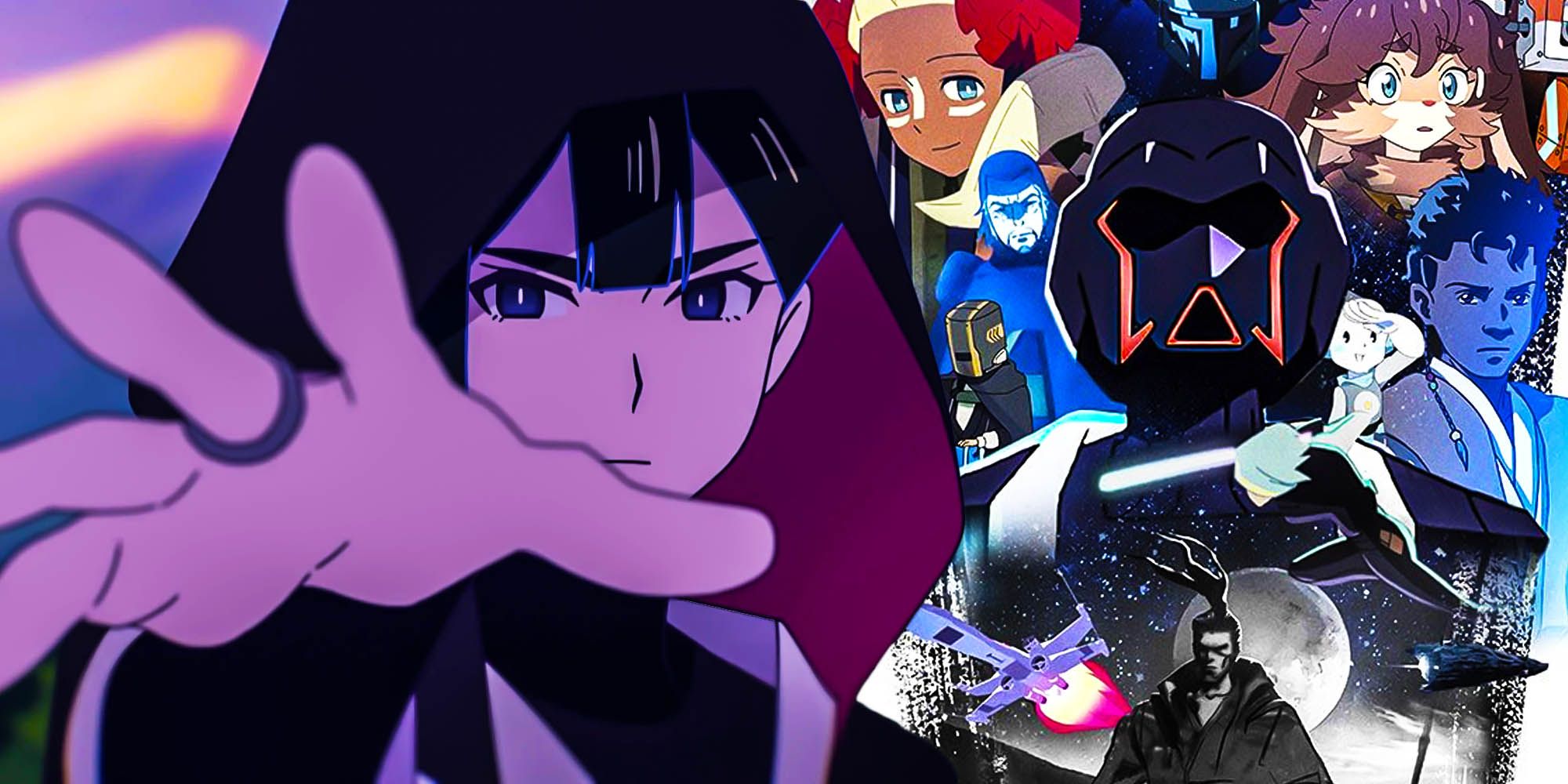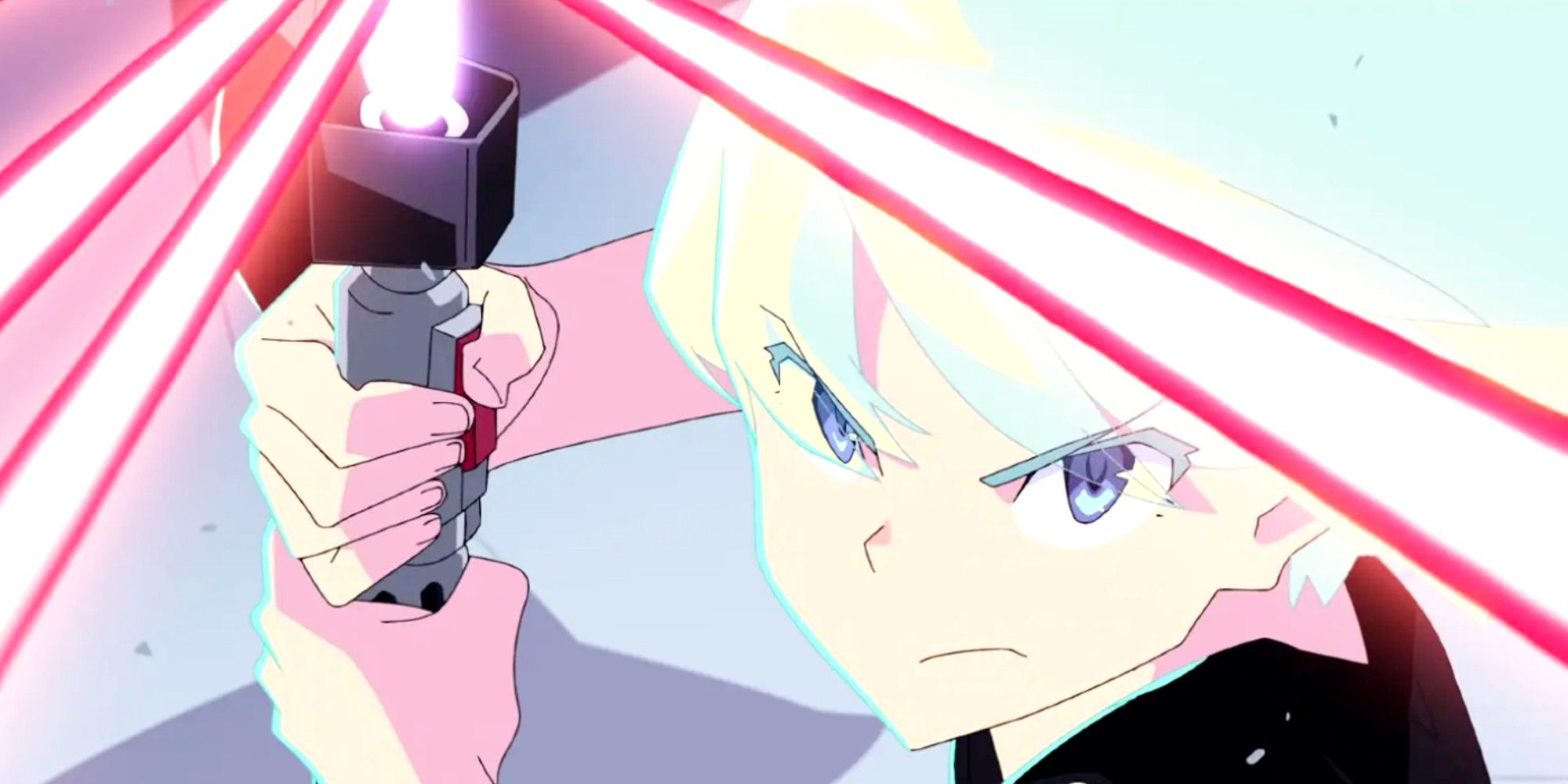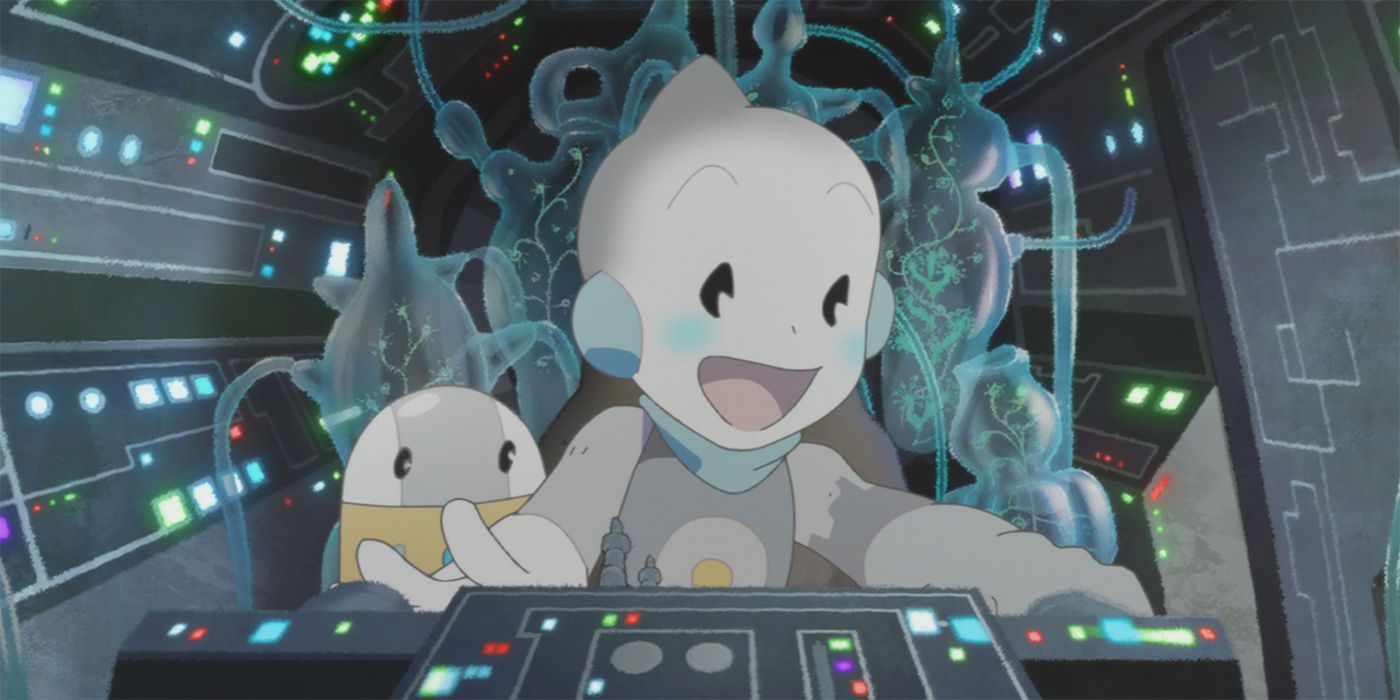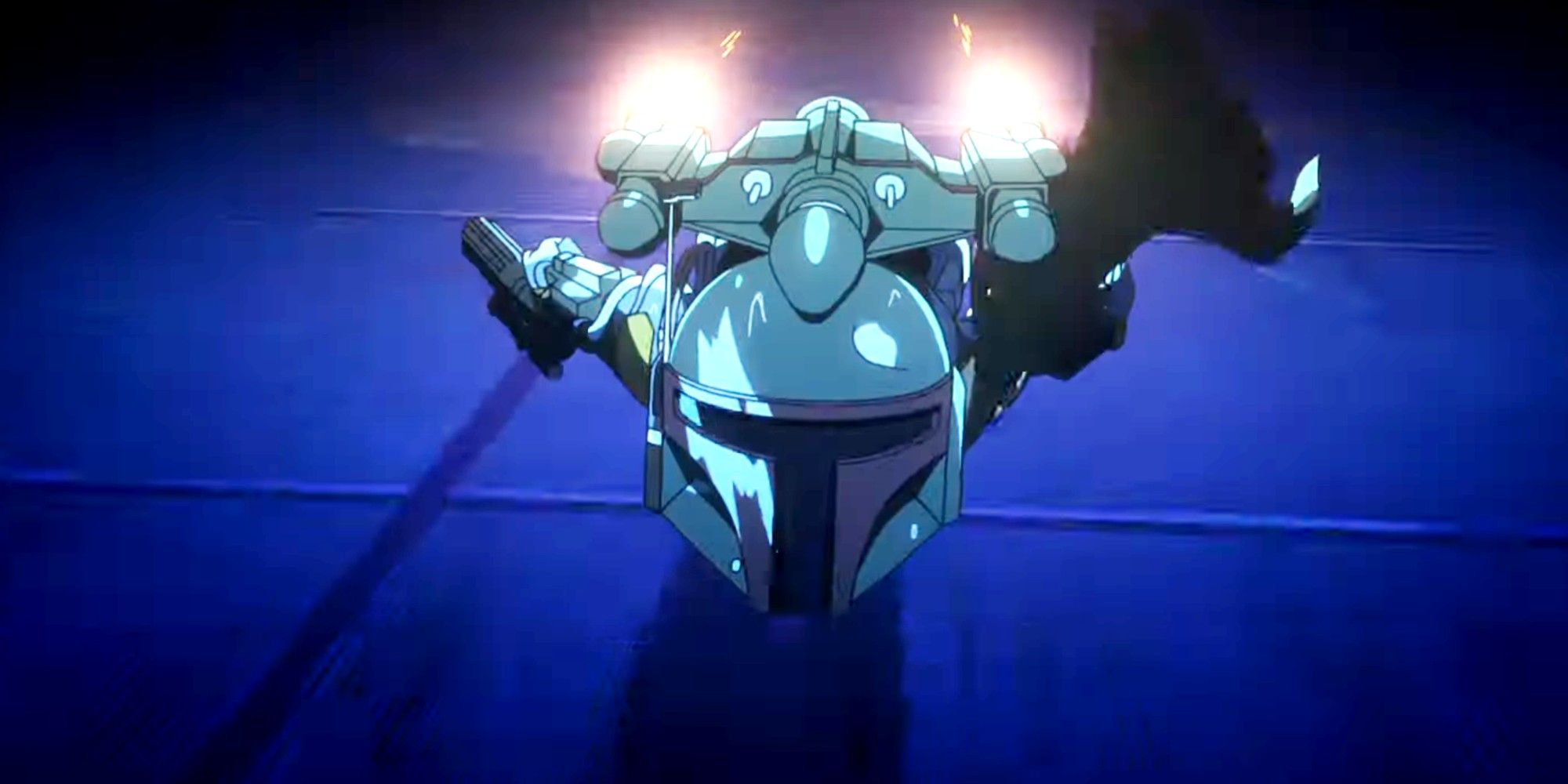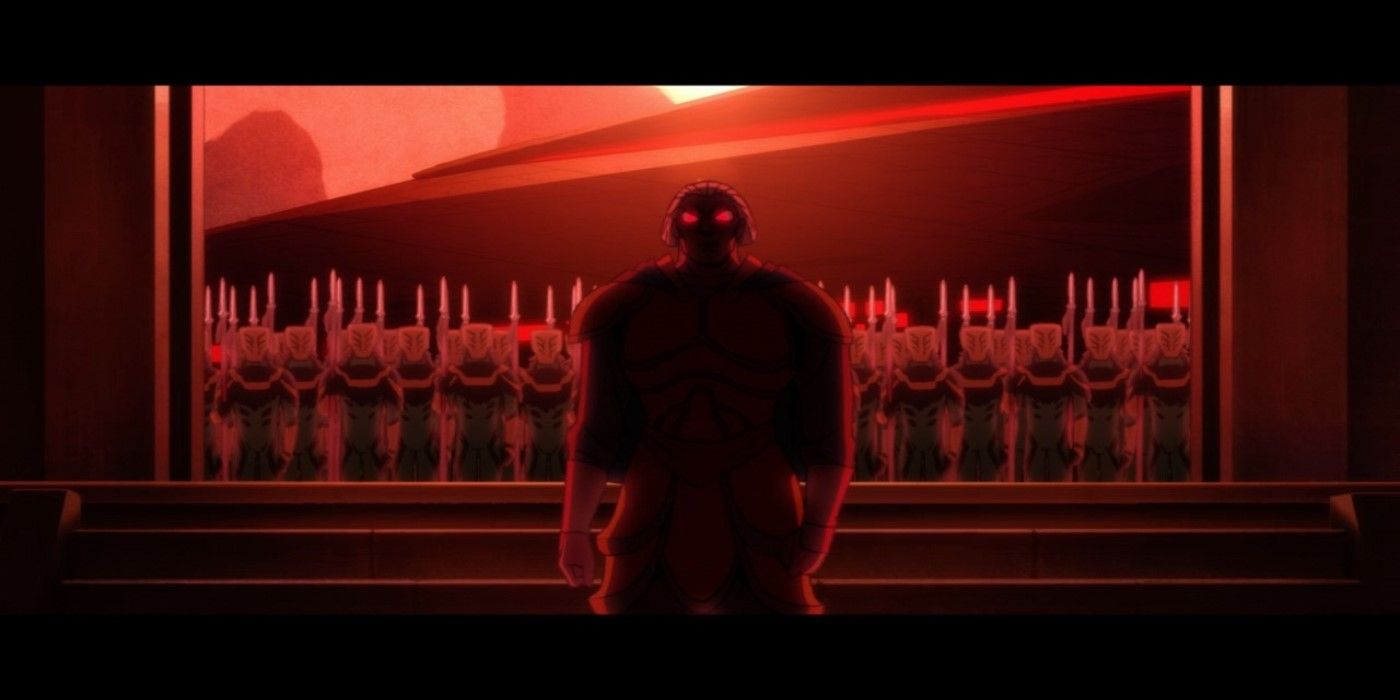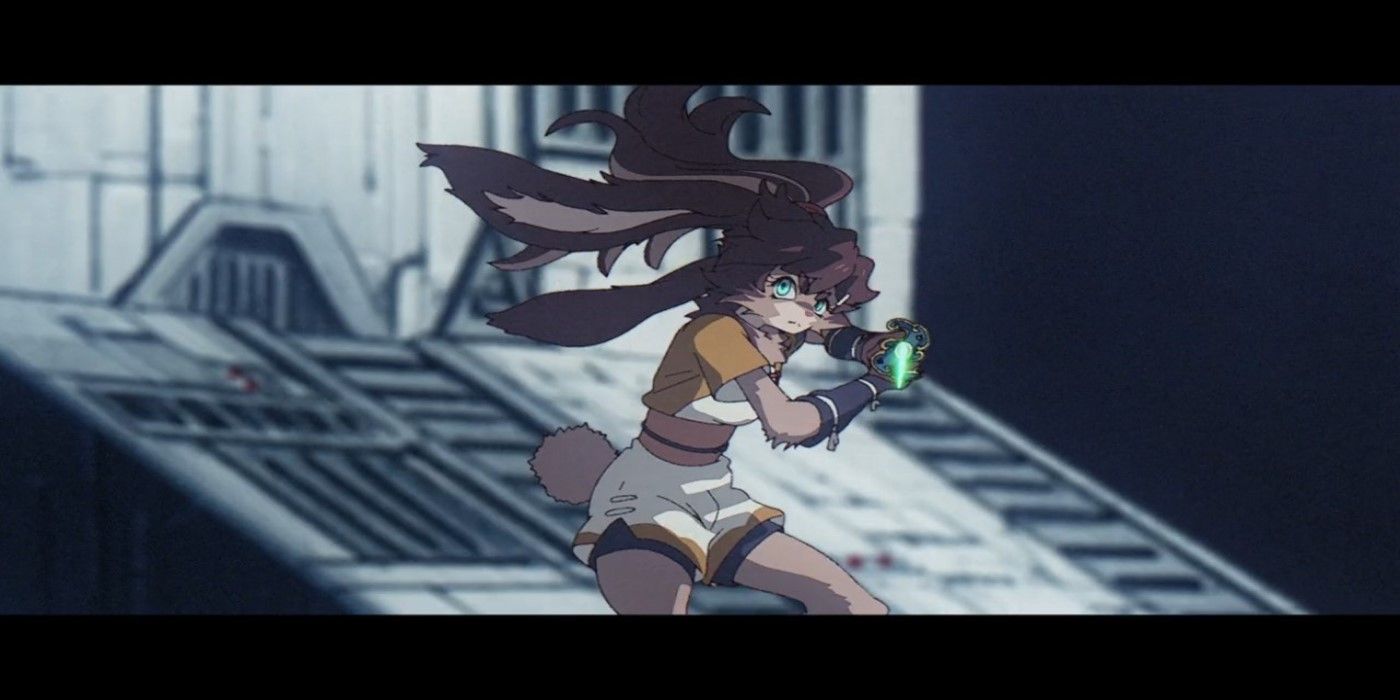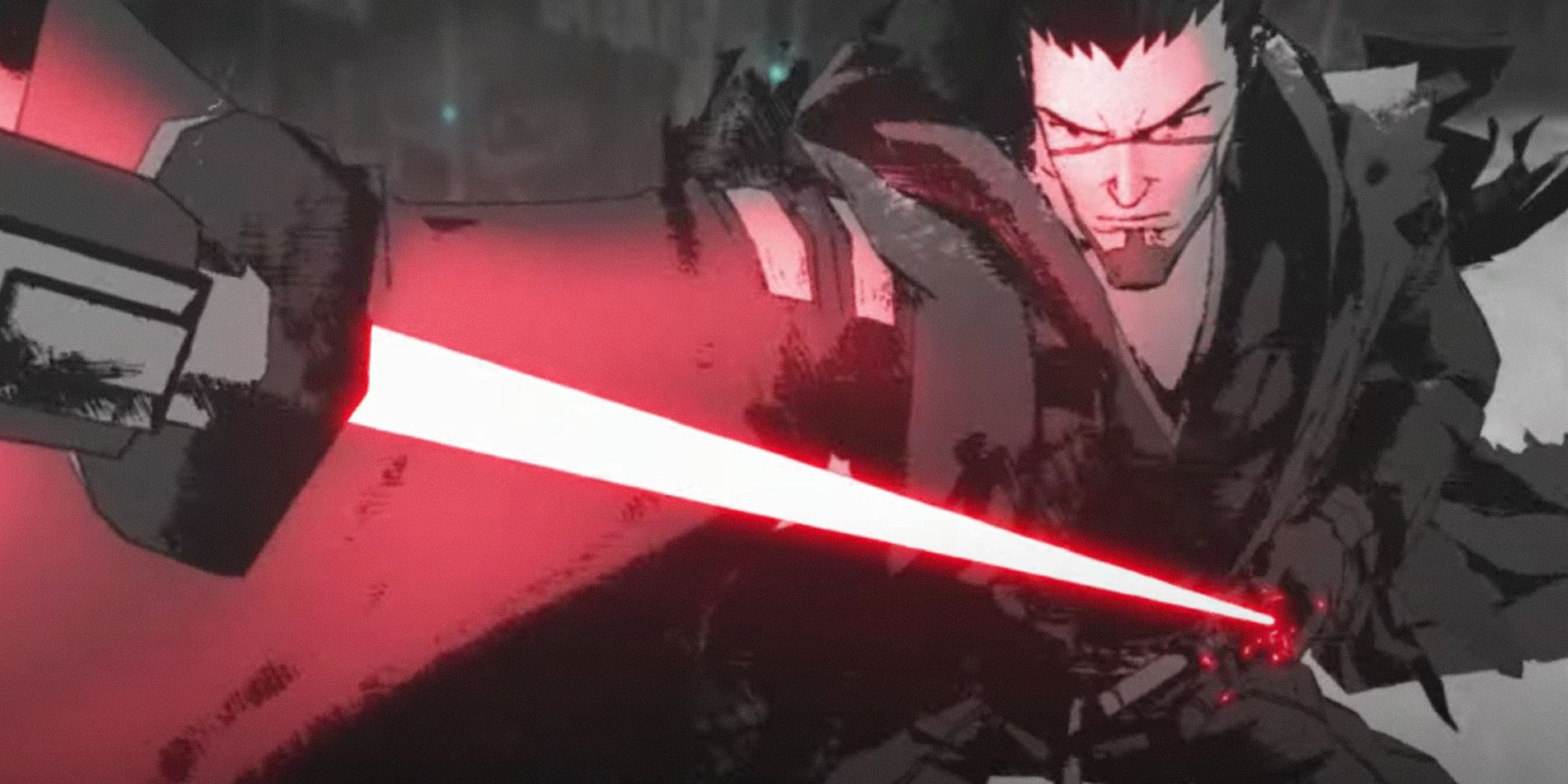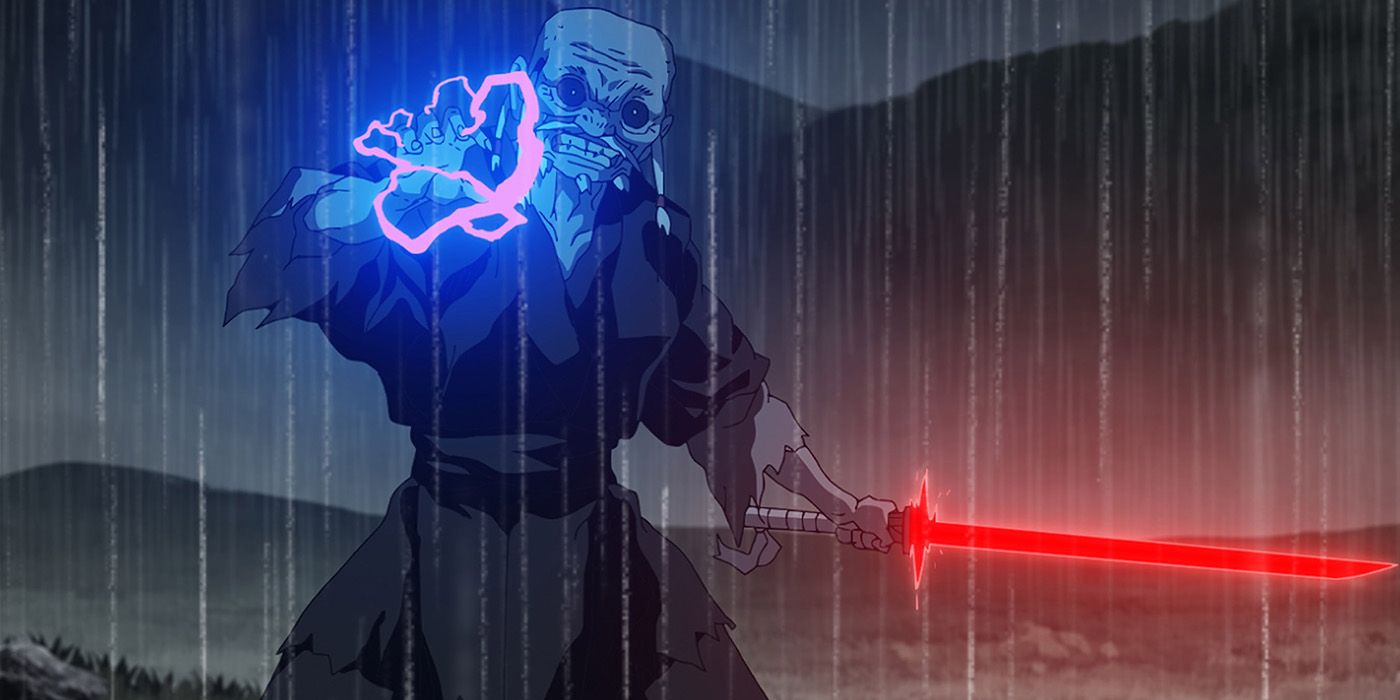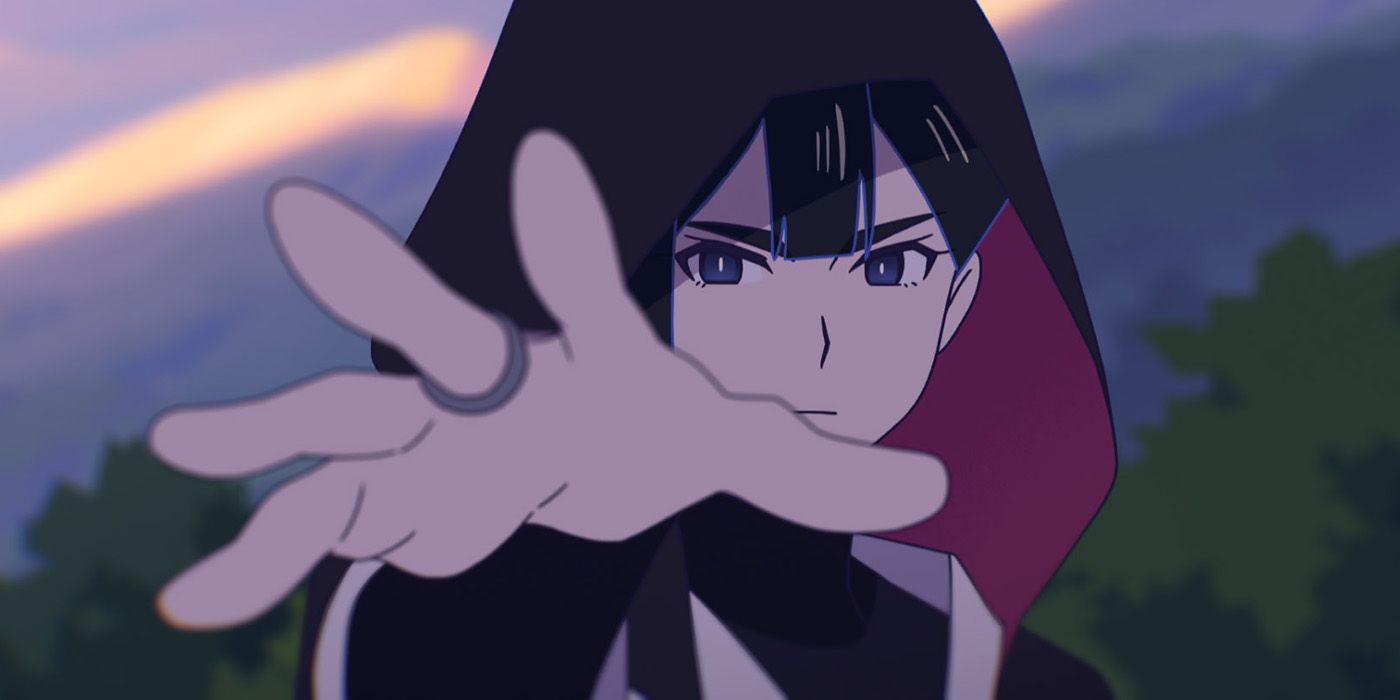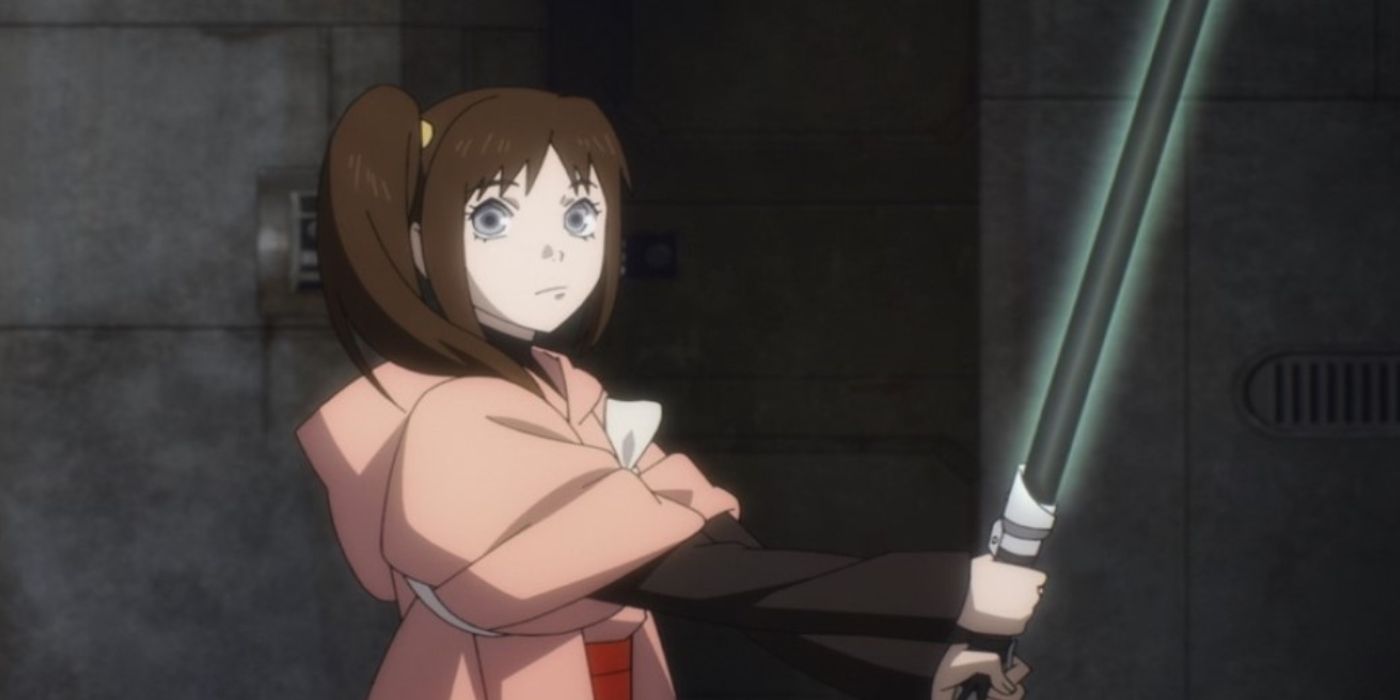Star Wars: Visions tells nine distinctive and beautiful standalone stories based on the Star Wars franchise, but how do they rank against each other from worst to best? Visions, while made by passionate Star Wars fans, doesn’t exist in either the canon or Legends timelines, with each episode being a self-contained standalone story, allowing for the highest possible creative freedom in each episode. Some episodes could easily fit into one or both continuities, but what’s more important is how they stay true to the spirit of the franchise and succeed as stories.
Each episode of Visions focuses on the Jedi and Sith in some way, tweaking and changing the malleable material to tell uplifting, action-packed, or heartbreaking tales. Visions is also the first official Star Wars anime (or anime-style animation), charting new territory for the franchise and allowing for new and exciting visual depictions of the Star Wars universe.
Every installment of Visions feels like a labor of love, crafting a unique story with the Star Wars universe as its canvas, and each features spectacular animation. All ultimately succeed in telling an authentic and exciting Star Wars story, but how do the nine episodes rank as far as their characters, stories, and symbolism go?
9. The Twins
Sometime after the events of the Skywalker Saga, “The Twins” depicts the conflict between two artificially created humans who serve the dark side. Moments before Am and Karre can unleash a Kyber powered superweapon on the galaxy, Karre has a change of heart, wishing to escape his service to the dark side and prevent his sister from destroying herself with her Kyber’s power. The ensuing conflict between Am and Karre begins as a lovingly familiar escape from a dark side vessel, but quickly becomes a battle between two god-like entities, whose Star Wars Visions lightsabers are used in ways the franchise has never shown before. It’s an exciting and over-the-top installment that’s sure to remind some hardcore viewers of Luke’s battle with Lumiya and the original Star Wars: Clone Wars micro-series. While by no means a bad episode, however, "The Twins" trades in-depth character development and story complexity for action, and the exaggerated powers of the twins seem perhaps a bit too exaggerated at times.
8. T0-B1
“T0-B1” begins as a lighthearted tale of a human-like droid who works with his Jedi creator to restore life on a desolate planet. The titular protagonist tries to understand his creator’s cryptic descriptions of the Force and what it means to be a Jedi, and his adventures accidentally attract the attention of an Imperial Inquisitor, who kills the Jedi. The episode rather jarringly switches from fun to tragic, which works in its favor as T0-B1 takes on the Imperial Inquisitor with nothing but a lightsaber, loyalty to his late master, and his dream of becoming a Jedi. The idea of a droid defeating a trained Inquisitor may feel a little far-fetched, but the episode ties the victory into one of its underlying themes. “T0-B1” shows, heartwarmingly, that anybody can be a hero in Star Wars, even if they lack Force-sensitivity.
7. Tatooine Rhapsody
“Tatooine Rhapsody” goes in the opposite direction, beginning tragically as Jay, a Jedi padawan, escapes a bloody Clone Wars battle and becomes a musician, leaving his former life behind. When one of his band members is taken prisoner by Boba Fett (with Temuera Morrison returning to voice the character), Jay and his fellow band members convince Jabba the Hutt to let them play one last song in Mos Espa for their friend’s freedom. The episode balances out its tragedy with humor and a likable ensemble cast, plus several wonderfully recreated Star Wars Tatooine locations. Moreover, it features a Hutt who wants nothing to do with a life of crime and former Jedi who refreshingly resolves his conflict with his new identity, not by repairing his lightsaber and cutting down waves of henchmen. With catchy music and characters who earnestly defy preconceived notions, "Tatooine Rhapsody" is a memorable entry.
6. Akakiri
One of the darker stories in Visions, “Akakiri” is an epic tragedy. Taking inspiration from The Hidden Fortress, an Akira Kurosawa film and one of the biggest inspirations for Star Wars in 1977, this episode features a Jedi, a princess, and a pair of bumbling peasants on a quest to defeat a Sith. Taking advantage of the Jedi’s internal struggle with the dark side, the Sith tricks him into a similar scenario to Anakin in the prequels. With beautifully heavy visual symbolism and a cruel no-win scenario, “Akakiri” ends on a downer note, highlighting the treachery of the dark side and the Sith. It's an incredibly well-executed episode, but its bummer ending and dark tone put it further down this list.
5. Lop and Ochō
With a strong focus on the theme of family, “Lop and Ochō” would feel right at home in the Star Wars timeline, alluding to an ancient rogue Jedi whose descendants struggle to protect their homeworld from oppression by Star Wars' Empire. With gorgeous environments, a heartbreaking ending, and exciting action scenes, “Lop and Ochō” is one of the most emotionally resonant episodes of Visions. The protagonist, Lop (who is sure to remind some of the infamous Jaxxon), becomes the latest in the ancient Jedi lineage, despite having no blood relation to her human sister and father, proving a point often made in both timelines that bloodlines aren’t the most important aspect of a family.
4. The Duel
Another Visions episode with heavy Kurosawa inspiration, “The Duel” tells a simple story with breathtaking action sequences. A Force-sensitive ronin, who turned out to be a Sith rather than a Jedi, defends a small town from a gang of Sith-led stormtrooper-like bandits. Their leader, who uses a deadly spinning lightsaber umbrella weapon, has a wonderfully intense extended duel with the Sith ronin. The episode’s animation and cinematography are its strength, with a mostly black and white color palette that imitates Kurosawa’s classic films and a compellingly ambiguous protagonist who protects the villagers, despite his dark side alignment. The story, while perhaps a little too simple, sufficiently justifies its exciting action scenes and lovingly references the films of Kurosawa.
3. The Elder
Taking place sometime between the seeming destruction of the Sith and the events of the Skywalker Saga, “The Elder” follows a Jedi Master and his padawan as they investigate a disturbance in the Force while exploring the Outer Rim. The disturbance, as it turns out, is a dark side user, who is neither a part of Darth Bane’s Sith nor a member of the previous generation. The episode features dialogue as strong as its intense action scenes and creates a wonderful sense of camaraderie between the Master and padawan. The titular elder Sith is a truly threatening villain, whose memorable battle with the Jedi Master harkens back to Anakin Skywalker’s duel with Asajj Ventress on Yavin IV.
2. The Village Bride
The Village Bride places itself firmly during the Jedi Purge, where F, an enigmatic Jedi survivor, observes an obscure world’s beautiful wedding customs before a gang of bandits terrorize them with repurposed Separatist Battle Droids. The episode features a compelling story that would feel appropriate in Star Wars: The Bad Batch or Star Wars Rebels, and an instantly likable pair of protagonists. One of its greatest aspects, however, is how perfectly it understands the Force. While the Force's dark side represents the unnatural and the corrupt, the Force itself (nicknamed the “light side”) represents nature and balance. Even those who don’t use the Force may unconsciously connect to it, as shown through the village’s customs.
1. The Ninth Jedi
Seemingly set after the Skywalker Saga once again, “The Ninth Jedi” takes many liberties with the Star Wars timeline to create a wholly unique and satisfying take on the Jedi and the Sith. With few Jedi left in the galaxy and the art of creating lightsabers largely lost to time, a Force-sensitive weaponsmith creates a set of lightsabers whose Kyber crystals have been fascinatingly altered. When activated, the blades’ length and color represent the Force power and alignment of its wielder, revealing the characters’ true intentions. The protagonist, Kara, gradually grows in skill and confidence as she fights off assailants to deliver the lightsabers to some of the galaxy’s last remaining survivors of the Jedi Order. The episode ends with several exciting twists and marvelous visual storytelling, making excellent use of both the preestablished Star Wars mythos and the creative freedom afforded to Star Wars: Visions to tell an equal parts distinctive and authentic Jedi and Sith story.

